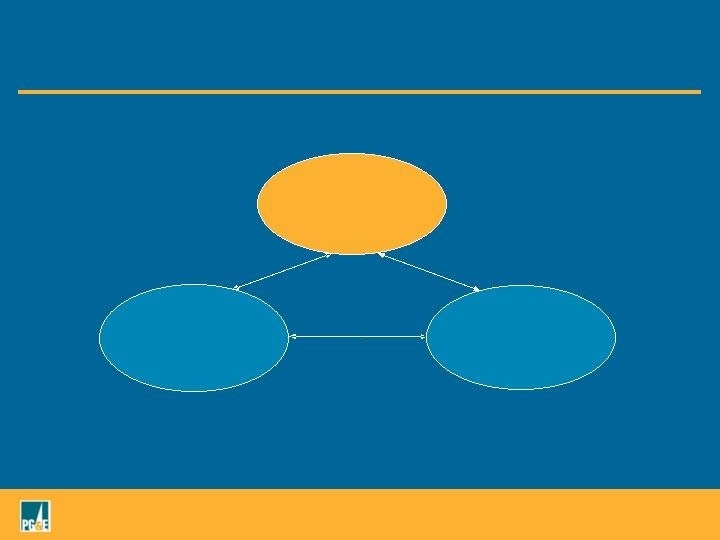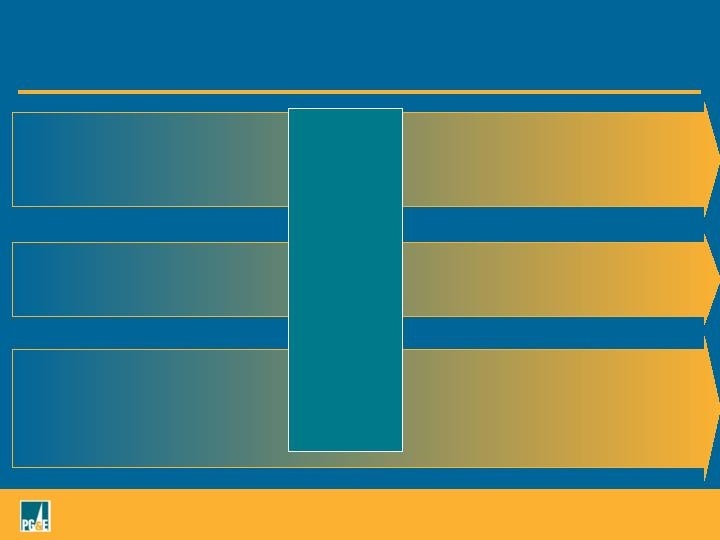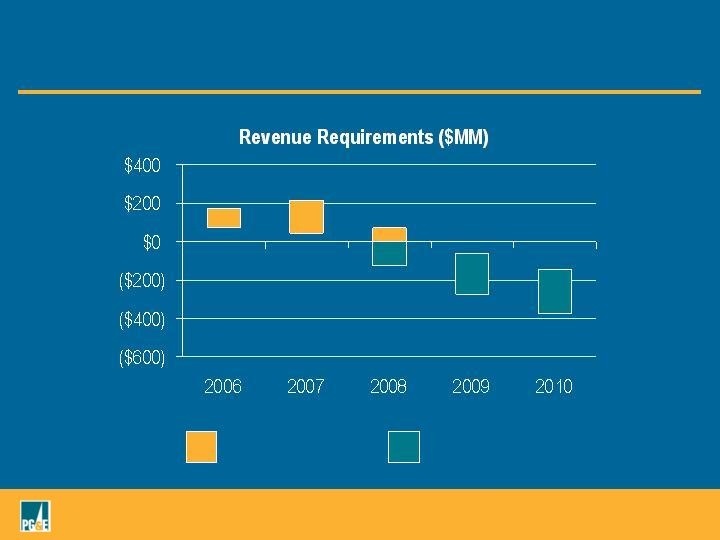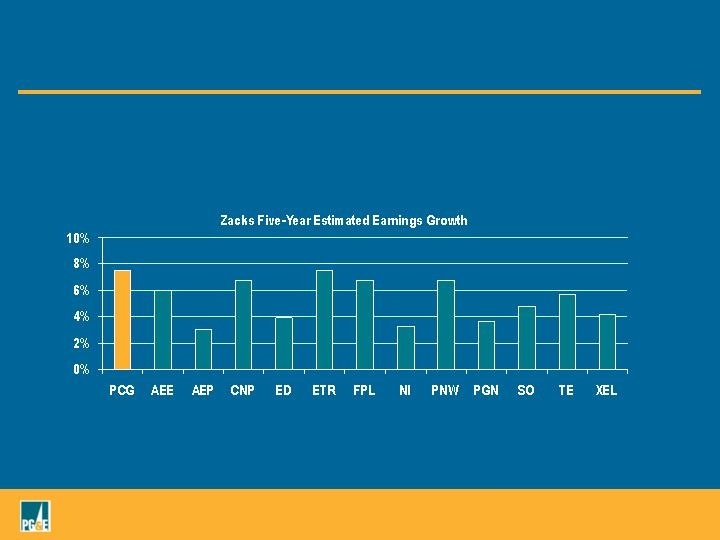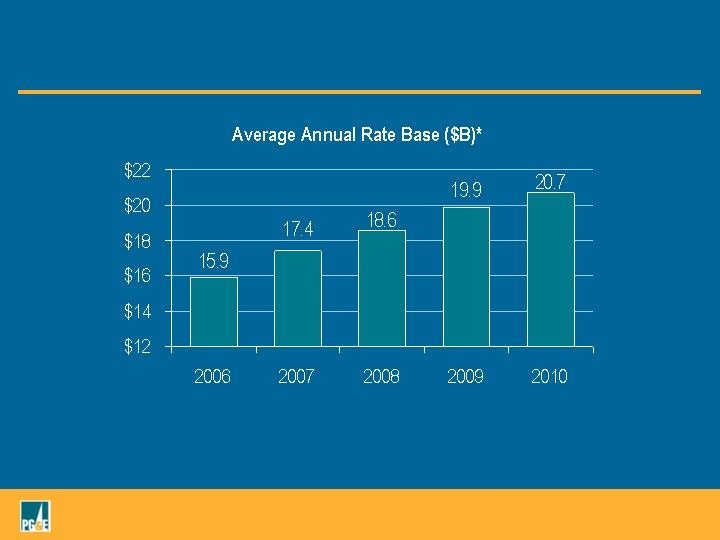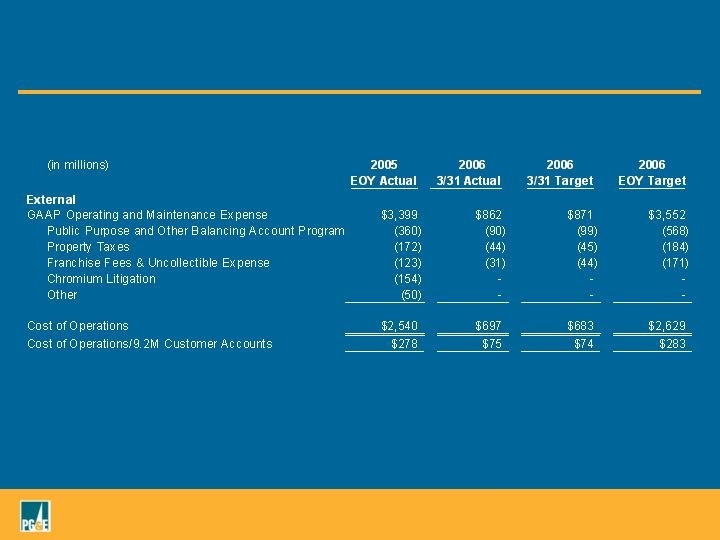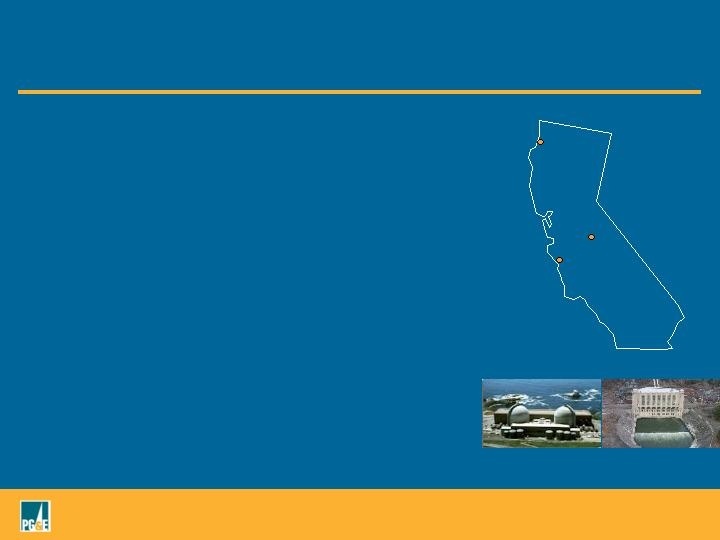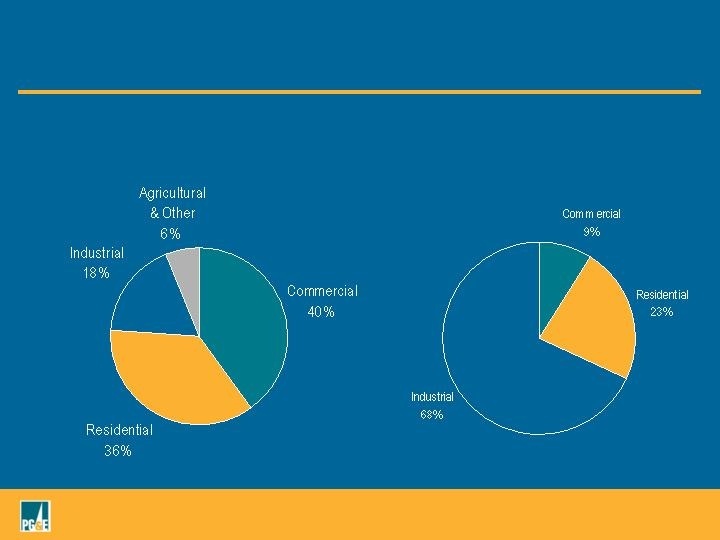
This presentation contains forward-looking statements regarding management's guidance for PG&E Corporation's 2006 and 2007 earnings per share rom operations, capital expenditures, Pacific Gas and Electric Company’s (Utility) rate base and rate base growth, anticipated costs and benefits from Transformation initiatives, anticipated electric resources, and targeted average annual growth rate for earnings per share from operations, over the 2006-2010 period. These statements are based on current expectations and various assumptions which management believes are reasonable, including that substantial capital investments are made in Utility business over the 2006-2010 period and that the Utility earns an authorized return on equity of 11.35%. These statements and assumptions are necessarily subject to various risks and uncertainties the realization or resolution of which are outside of management's control. Actual results may differ materially. Factors that could cause actual results to differ materially include:
•
Unanticipated changes in operating expenses or capital expenditures, which may affect the Utility’s ability to earn its authorized rate of return;
•
How the Utility manages its responsibility to procure electric capacity and energy for its customers;
•
The adequacy and price of natural gas supplies, and the ability of the Utility to manage and respond to the volatility of the natural gas market for its
customers;
•
The operation of the Utility’s Diablo Canyon nuclear power plant, which could cause the Utility to incur potentially significant environmental costs and
capital expenditures, and the extent to which the Utility is able to timely increase its spent nuclear fuel storage capacity at Diablo Canyon;
•
Whether the Utility is able to recognize the anticipated cost benefits and savings to result from its efforts to improve customer service through
implementation of specific initiatives to streamline business processes and deploy new technology;
•
The outcome of proceedings pending at the Federal Energy Regulatory Commission and the California Public Utilities Commission (CPUC),
including the Utility’s 2007 General Rate Case and the CPUC’s pending investigation into the Utility’s billing and collection practices;
•
How the CPUC administers the capital structure, stand-alone dividend, and first priority conditions of the CPUC’s decisions permitting the
establishment of holding companies for the California investor-owned electric utilities, and the outcome of the CPUC's new rulemaking proceeding
concerning the relationship between the California investor-owned energy utilities and their holding companies and non-regulated affiliates;
•
The impact of the recently adopted Energy Policy Act of 2005 and future legislative or regulatory actions or policies affecting the energy industry;
•
Increased municipalization and other forms of bypass in the Utility’s service territory; and
•
Other factors discussed in PG&E Corporation's and Pacific Gas and Electric Company’s SEC reports.
Cautionary Statement Regarding Forward-Looking Information








